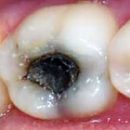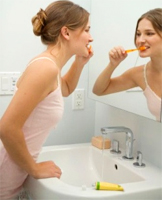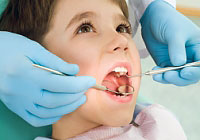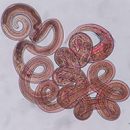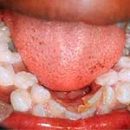What is and how professional oral hygiene? Answer to this question you will find in the article.
Content
If you want to have a beautiful smile, you need to start with a dentist. The dentist will help identify the diseases of the teeth, the reason for which is bad care for the oral cavity, and as a result - a change in microflora (the appearance of pathogens of microorganisms) of the oral cavity.
In the office of the dentist you will learn whether you have the initial manifestations of caries and periodontal (inflammation of the tissues surrounding the teeth), how to care for your teeth and whiten them.
If the dentist-therapist did not find any pathology to be treated, he would send you to a hygienist dentist, and maybe he himself will conduct all the necessary procedures for teeth purification.
What is professional oral hygiene
At home, even using a good toothbrush, dental threads (flosses) and special rinsing it is impossible to completely remove dental deposits. This can only make a specially prepared dentist, dentist-hygienist. It removes the raids and the dented stone, purifies interdental gaps and sewage pockets, freeing teeth from pathogens and unpleasant odor. After professional cleaning disappears unbreakable breathing, and the teeth are noticeably whiten.
Professional oral hygiene includes:
- removal of soft and solid dental deposits (dental plating and dental stone);
- assessing the effectiveness of the purification of the oral cavity;
- Grinding and polishing of teeth and seals;
- teeth fluoride;
- sealing of hard-to-reach surfaces of the teeth;
- Training to the patient correct mouth care.
After the dentist-hygienic will conduct a course of professional oral hygiene, check its effectiveness and teach you the right individual oral hygiene, you can do this at home, periodically visiting the dentist. Four visits to the dentist with an interval of 2-3 days are recommended, then the intervals increase to 14, 30 and 60 days, after which the dentist will sufficiently visit once every six months. So, we go to the hygienist dentist.
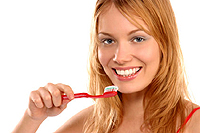 Remove dental deposits. Removal of dental deposits (dental plane and dental) can be carried out by mechanical, chemical and drug methods.
Remove dental deposits. Removal of dental deposits (dental plane and dental) can be carried out by mechanical, chemical and drug methods.
Mechanical method is the removal of plaque using special tools (hooks or skalers, curettes, etc.) and equipment (ultrasound skalers, powder-jet systems).
Chemical method for removing dental deposits using different acids is rarely applied. It is usually used for softening sediments before removing the mechanical method.
Medication tools are killed and dissolved microbes, dissolve the dented stone, create special films that prevent the sedimentation of microbes on the surface of the enamel. Only dentist can assign such funds.
Grind and polishing the surface of the teeth. After removed dental sediments, grinding and polishing of teeth are carried out using an abrasive polishing paste and a special tool (brushes, rubber caps). The grinding of teeth eliminates the irregularities that appeared in the dental deposit process. During polishing, the perfect smoothness of the surface is achieved. This procedure is carried out in order for microbial plaques that make up the basis of the dental plaque, could not be held on the surface of the enamel. Must be carried out and polishing seals.
Cover teeth protective fluorine-containing film
After removal of dental sediments and polishing the surface of the teeth, various fluorination methods are used. To do this, use fluorine-containing gels, pastes, varnishes, rinses. The teeth are covered with a protective fluorine-containing film, which increases the stability of dental enamel and serves as additional prevention of caries.
We close the pits and cleft in your teeth. Sealing (sealing, closing) of hard-to-reach places on teeth is carried out using special sealants. At the same time, the risk of caries disease is reduced, since the formation of a soft dental plaque and the development of caries under the sealant is almost impossible.
Learning the right cavity care. When you first visit the Cabinet of the Dentist-hygienist, it will demonstrate to you painted by a special way of dental flare. And after professional cleaning of teeth, it will take an assessment of the state of the oral cavity and teach the proper individual oral hygiene at home. About how it is necessary to carry out such hygiene, I will tell you in the next article.

